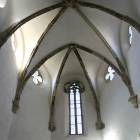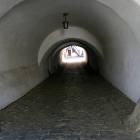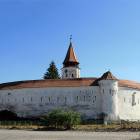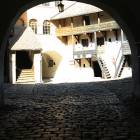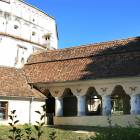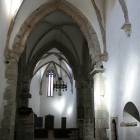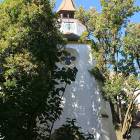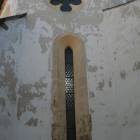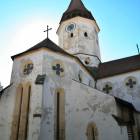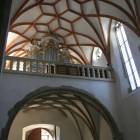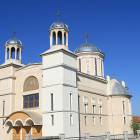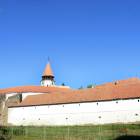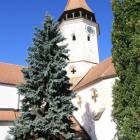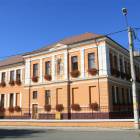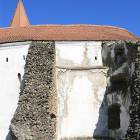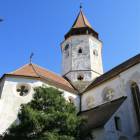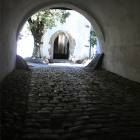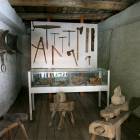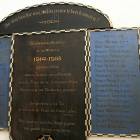Prejmer (Brasov), best preserved fortified church in East Europe
German settlers built a lot of fortified churches allover Transylvania, but what makes Prejmer stand out from other similar monuments from UNESCO World Heritage list is the strength of the defense walls and the quality of the recent restoration. The styles and craftsmanship may vary from one construction to another, but you can still see the clear guiding lines of Saxon religious buildings, no matter the denomination. Everywhere, the same accent on modesty, on robust yet self-possessed lines, a respect for ordinances and a sense of community, with communities united around each parish.
But don’t be intimidated by this inclination for austerity, for scarce decorations and respect for hard working ethic. With a little imagination, a visit to a stronghold like Prejmer may prove more fascinating than a trip to a romantic castle with its array of Gothic legends. Just imagine you can literally walk inside the surrounding walls, through stone and wood slim corridors and see from place to place the holes that the archers used to stop a siege. Viewed from different angles, the splendid church starts to release its own stories. You can go through the entrance gate, with its trap with spikes that could kill the uninvited or see the shops where weapons were prepared.
And it’s not just the military side of the story. You also see one of the oldest school classes, another sign of the communal interest for education that the Germans had. In this case, the builders of this fortification were the Teutons, a military order created during one of the crusades to Jerusalem. The church, that probably existed before the surrounding walls, has marks of the Cistercian Order, a Catholic order that cultivated the teachings of Saint Benedict and was very found of Romanic style of architecture. From Benedictines the village was passed on to Teuton knights by the Hungarian king, who wanted to make active this region with low population and exposed to barbarian invasions. The region of Bârsa is located right in the center of today Romania, in the curvature made by the Carpathian mountains chain, including several medieval strongholds that are now among the most popular tourist destination in the country: Bran Castle, Râșnov Fortress and Brașov, the town that is only 17 km SE of Prejmer.
The Teutons, though were given a written property document for this land soon ran into conflict with the king, aspiring for almost independent status. Around their organizing spirit other communities came to Prejmer, like the German Saxons, the Hungarians and than Szekely, brought by the crown to replace the Teutons as military force in defense of Carpathian border of Transylvania. From the Teutons we also have the German name of the place, Tarlau, from a nearby river. The surrounding walls are 12 m high and even 3-4 m thick, with bastions and corridors for soldiers to fire their arches or through various projectiles. The stronghold even had a moat and a mobile bridge, but today the moat almost disappeared an the entrance is on solid ground.
The architectural style exhibits elements of Romanesque and Gothic origin, probably in sync with other Benedictine monasteries of Europe in the first two centuries of the second millennium. In France, where the Benedictine (Cistercian) order was well represented appeared a style known as Burgundian Romanesque or Burgundian Gothic, as in Cluny Abbey (Burgundia), where elements that will become representative for Gothic art will be included in a Romanesque church: pointed arches, flying buttresses for supporting taller walls without columns and decorative ribs. The overall proportions are yet moderated like in Romanesque art and the wild decorations with mythological animals that will become common in Gothic art are absent in Prejmer like in Cluny. Another source of inspiration for this evolved phase of Romanesque art may be the Benedictine monastery of Citeaux, Dijon, France.
The interior yard is embellished by the black and white contrast made by the wooden staircases and balconies and lime walls made by the 3-4 stores high of rooms, shops and defense corridors. Across the main road of the city a large Orthodox cathedral is almost ready for the opening.
Mai multe despre: Architecture, Romania • Brasov • Burgundian Gothic • Burzenland • Evangelical Church • fortified church • German • Gothic • Prazsmar • Prejmer • Romania • Saxons • Tartlau • Torteln- Home Page
start page - Architecture
landmark buildings - Sacred architecture
places of worship - Nature
landscape photography - Concert
performing artists - Christmas
Santa Claus pictures
- Jooble
jobs for photographers - Escape
an out of control blog - Merry Christmas
The best organizer of Christmas parties - Astro photo
Eclipse hunting and astrological photography




